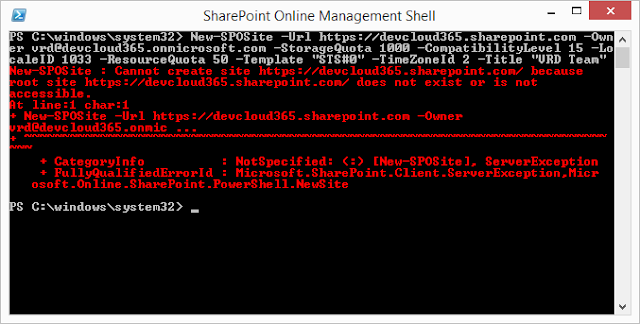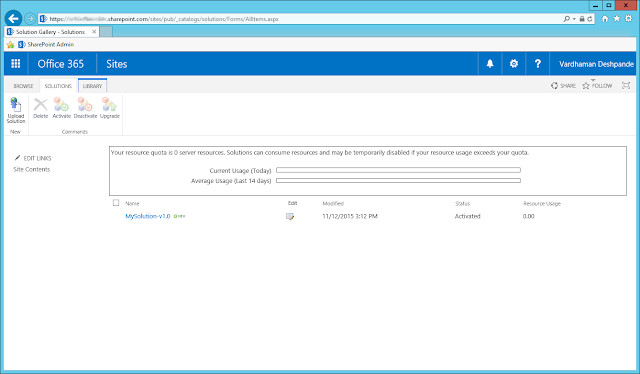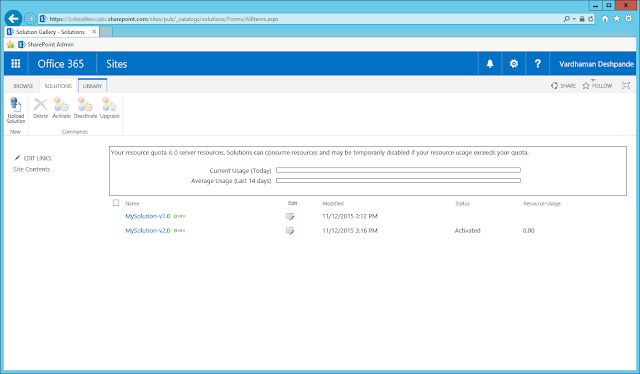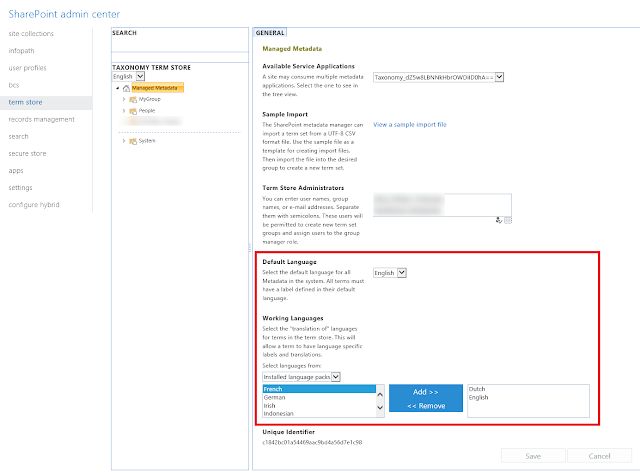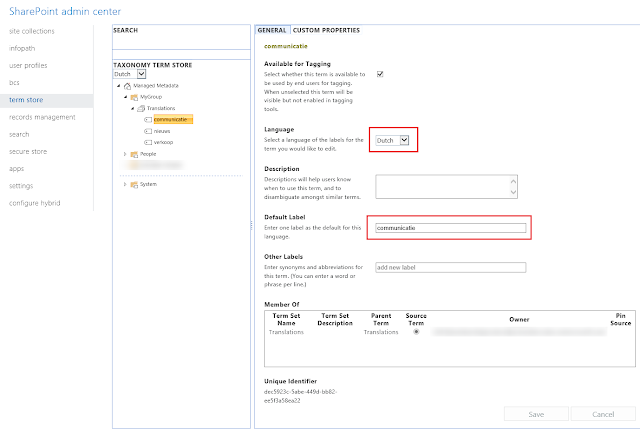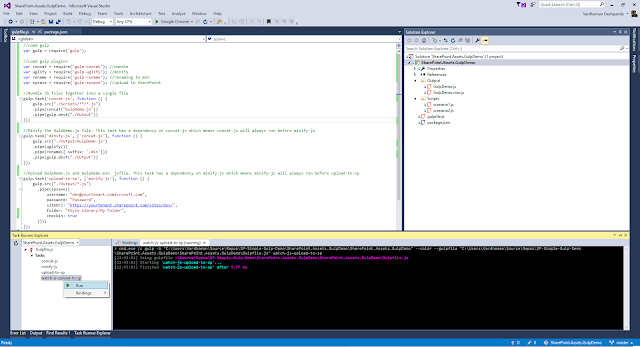The recent guidance from Microsoft regarding the provisioning of SharePoint artifacts is pretty clear. The recommendation is to completely move away from declarative creation of Site Columns, Content Types etc. and instead, create them completely from code.
To support this approach of programmatically creating artifacts, a lot of work is being done on the "Provisioning Engine" in the OfficeDev Patterns and Practices Library on GitHub. To put it very simply, the Provisioning Engine reads a predefined XML file called the "PnP Provisioning Schema" and creates all the SharePoint artifacts using CSOM. Since this engine predominantly uses C#/.NET, it is expected to be run from somewhere like an Azure Web Job, a Web Application on an IIS server or a simple console application.
This method of provisioning is great for clients who opt for Azure subscriptions or IIS servers along with their SharePoint roll-outs. But this is not necessarily true with clients who only want to go for SharePoint or who do not have enough budget for additional Azure or IIS installs. So far, the only option in these cases is to go with the traditional declarative XML based provisioning using No Code Sandbox Solutions (NCSS). This approach is still valid at this time and Microsoft has stated that No Code Sandbox Solutions continue to remain supported:
http://blogs.msdn.com/b/sharepointdev/archive/2014/01/14/deprecation-of-custom-code-in-sandboxed-solutions.aspx
Still, in this post I am going to explore another form of provisioning SharePoint artifacts completely based on the JavaScript Object Model (JSOM). Since the provisioning is done completely from JavaScript running in the browser, there is no need for a platform like Azure or IIS to run this code. I came across the following project in Office Dev PnP which shows how to use a SharePoint hosted Add-In (App) to create artifacts like Site Columns and Content Types etc. in the host web.
https://github.com/OfficeDev/PnP/tree/master/Samples/Provisioning.Jsom
Some code examples from the project:
1) This project uses a SharePoint Hosted Add-In (App) to run the JSOM code. But with a few modifications, it can be made to run from a JavaScript file provisioned to a document library with a No Code Sandbox solution. The readme file of this solution mentions an additional project "Provisioning.Jsom.Ncss" which seems to be missing from the solution. My guess is this project did the exact same thing. With this approach, we remove the dependency on the Add-In (App) Model for provisioning.
2) Currently for values like site column names, types, content type names etc hard coded strings are being used. This can be modified to be read from an XML file, preferably the PnP Provisioning Schema. The schema XML file can be deployed with the Provisioning JavaScript file in the NCSS itself.
3) This approach can be used to create sub sites but not site collections as there is no way right now to create site collections through JSOM. So the deployment process will have to be manual creation of a Site Collection with an empty web template, and then to upload the WSP which will deploy the JS file to the SharePoint site. This file will then do the artifact provisioning.
I am going to explore these options and will post something in the future around this approach.
Thanks for reading. Hope you find this information useful in some way!
To support this approach of programmatically creating artifacts, a lot of work is being done on the "Provisioning Engine" in the OfficeDev Patterns and Practices Library on GitHub. To put it very simply, the Provisioning Engine reads a predefined XML file called the "PnP Provisioning Schema" and creates all the SharePoint artifacts using CSOM. Since this engine predominantly uses C#/.NET, it is expected to be run from somewhere like an Azure Web Job, a Web Application on an IIS server or a simple console application.
This method of provisioning is great for clients who opt for Azure subscriptions or IIS servers along with their SharePoint roll-outs. But this is not necessarily true with clients who only want to go for SharePoint or who do not have enough budget for additional Azure or IIS installs. So far, the only option in these cases is to go with the traditional declarative XML based provisioning using No Code Sandbox Solutions (NCSS). This approach is still valid at this time and Microsoft has stated that No Code Sandbox Solutions continue to remain supported:
http://blogs.msdn.com/b/sharepointdev/archive/2014/01/14/deprecation-of-custom-code-in-sandboxed-solutions.aspx
Still, in this post I am going to explore another form of provisioning SharePoint artifacts completely based on the JavaScript Object Model (JSOM). Since the provisioning is done completely from JavaScript running in the browser, there is no need for a platform like Azure or IIS to run this code. I came across the following project in Office Dev PnP which shows how to use a SharePoint hosted Add-In (App) to create artifacts like Site Columns and Content Types etc. in the host web.
https://github.com/OfficeDev/PnP/tree/master/Samples/Provisioning.Jsom
Some code examples from the project:
1) Create Site Column:
2) Create Content Type:
Here are my observations about this approach:
1) This project uses a SharePoint Hosted Add-In (App) to run the JSOM code. But with a few modifications, it can be made to run from a JavaScript file provisioned to a document library with a No Code Sandbox solution. The readme file of this solution mentions an additional project "Provisioning.Jsom.Ncss" which seems to be missing from the solution. My guess is this project did the exact same thing. With this approach, we remove the dependency on the Add-In (App) Model for provisioning.
2) Currently for values like site column names, types, content type names etc hard coded strings are being used. This can be modified to be read from an XML file, preferably the PnP Provisioning Schema. The schema XML file can be deployed with the Provisioning JavaScript file in the NCSS itself.
3) This approach can be used to create sub sites but not site collections as there is no way right now to create site collections through JSOM. So the deployment process will have to be manual creation of a Site Collection with an empty web template, and then to upload the WSP which will deploy the JS file to the SharePoint site. This file will then do the artifact provisioning.
I am going to explore these options and will post something in the future around this approach.
Thanks for reading. Hope you find this information useful in some way!
